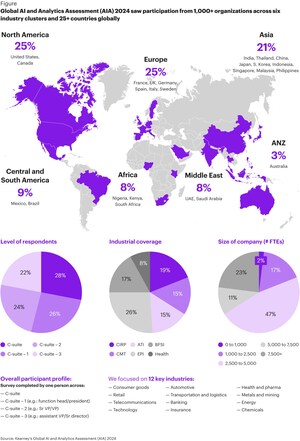- 68% of consumers would rather wait for a product than pay more for it
- 71% of consumers find appeal in products that are rare or limited
- 80% of consumers look forward to seasonal food and recipes
- 72% of consumers go to stores for a specific brand or product
CHICAGO, May 19, 2022 /PRNewswire/ -- Today, global management consulting firm Kearney's consumer think tank, the Kearney Consumer Institute (KCI), released its Q2 2022 briefing on scarcity, You Can't Always Get What You Want: Reimagining the Scarcity Model. The report examines the changing nature of scarcity in light of inflation, supply chain snafus, and consumers' need to prioritize purchases. Surveying consumer sentiment on scarcity, the research looks into the varying nature of the consumer's relationship with different forms of scarcity.
"To the consumer, scarcity doesn't have to be all bad—it can have a certain appeal, and for different reasons," said the report's author Katie Thomas, who leads the Kearney Consumer Institute. "In some countries, for example, scarcity can drive people to the market sooner rather than later—say fresh strawberries or that special baked treat in a local Provençal market. If you miss it, you'll have to wait until next time it's in stock, or in season."
The KCI started to explore the topic when the researchers observed the different trade-offs consumers were making in their buying habits, and began asking, "What are consumers are going to trade off, what are they going to seek out, what are they willing to give up, and what are they willing to trade down for?"
The Q2 briefing addresses themes such as:
- How the overall concept of scarcity relies on consumers to care or engage with the product or service
- Understanding that consumers' relationship with scarcity can impact everything from pricing decisions to innovation planning to M&A activity
- The scarcity tipping point that retailers and brands need to watch for
- Factors in consumers' search for rare products such as quality, status, seasonality, and collectability
The study found that some brands use scarcity as a successful draw for loyalty, improving consumer sentiment, and for maximizing their customers' time investment. Resale is another way retailers and brands are increasing consumer access to higher-end or scarcer products. "If you think of the luxury market and the scarcity supply chain, you see that a number of factors, including but not limited to price, can be behind the phenomenon of scarcity," said Katie Thomas. "We're living in a time of inflation. Watching how consumers have been dealing with that, and how consumers use their own time, time being a finite resource, we see that scarcity can be both a motivator and a way for brands to underscore their value propositions."
A copy of the Q2 KCI Briefing, You Can't Always Get What You Want: Reimagining the Scarcity Model, is available at this link.
About Kearney
As a global consulting partnership in more than 40 countries, our people make us who we are. We're individuals who take as much joy from those we work with as the work itself. Driven to be the difference between a big idea and making it happen, we help our clients break through. Learn more at Kearney.com.
U.S. Media Contact:
Meir Kahtan, MKPR, [email protected] +1 917-864-0800
UK Media Contact:
Tom Stewart-Walvin, Rostrum, [email protected], +44 (0)203 404 7708
SOURCE Kearney

WANT YOUR COMPANY'S NEWS FEATURED ON PRNEWSWIRE.COM?
Newsrooms &
Influencers
Digital Media
Outlets
Journalists
Opted In





Share this article